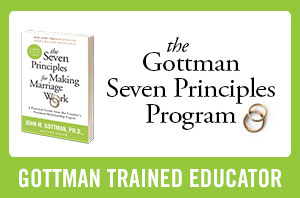
Whether you’ve been in a relationship for years or just started dating your partner, disagreements are bound to happen. You are two different people, after all. However, negative emotions tend to stew and turn a relationship sour when a disagreement turns into a fight or ends with only one party getting their way. How do you keep disagreements civil without giving up your side?
Compromise.
The one problem with compromise is that it can be hard– especially when you feel adamant about your opinions or if your partner is unwilling to compromise. That’s why I’d like to share my four favorite tips for compromising with your partner:
The Importance of Compromising with Your Partner
I’ve already mentioned compromise quite a bit so far, so let’s get into a definition of the term, so we’re all on the same page. Generally speaking, compromise consists of two parties agreeing on a solution to a problem. In a relationship, partners compromise all the time, whether it’s splitting up the housework, managing bills, or running errands. Compromise even happens during sex.
Let’s be clear, though: compromise involves both parties making a sacrifice to achieve a solution. Compromise is not:
- Settling for what your partner wants
- Demanding your partner do something and refusing to budge
- Arguing with your partner until they are fed up and agree with you
Strengthen Your Understanding of Each Other
The best part about compromising with your partner is that you’ll build a better understanding of each other. We make a lot of decisions in our daily lives, and working through decisions to form a compromise with your partner is a great way to learn about their preferences.
Let’s say you want to go to a theme park, but your partner doesn’t. When you discuss compromising for your date, you find out that your partner doesn’t like rollercoasters. With this information, you can plan your date around low-key rides or do something else exciting!
Gottman’s Art of Compromise: The Two Ovals Exercise
, developed by John Gottman, is a great way to visualize your flexibility. To start, draw an oval with a bigger oval surrounding it. The inner oval represents your inflexible areas or most essential needs on an issue, and the outer circle represents things you are flexible about.
After you’ve made your ovals and filled them out, compare them with your partner’s. You may need to make a Venn diagram or write down areas you agree on. By comparing your flexible and inflexible needs, you and your partner can find common ground.
Communication Tips and Tricks for Compromise
So, how do we make healthy compromises with our partners? When I work with couples, there are four things I remind them of when hashing out a disagreement:
 I’d also like to mention that these tips work best after you and your partner have taken a step back from the conflict when you are calm and ready to have a relaxed conversation.
I’d also like to mention that these tips work best after you and your partner have taken a step back from the conflict when you are calm and ready to have a relaxed conversation.
1. Do not Sacrifice Your Needs
As an individual, you have specific needs and deserve respect! When you compromise with your partner, stay firm on your most important needs and values, and expect your partner to do the same. A healthy compromise between partners will ensure that both parties’ basic needs are met.
2. Be Specific!
If you tell your partner “no” or “I don’t want to” without explaining why it’ll confuse both sides. Gottman’s Two Ovals Exercise suggests asking each other these questions to stay specific:
- Can you help me to understand why your “inflexible” needs or values are so important to you?
- What are your guiding feelings here?
- What feelings and goals do we have in common? How might these goals be accomplished?
- Help me to understand your flexible areas. Let’s see which ones we have in common.
- How can I help you to meet your core needs?
- What temporary compromise can we reach on this problem
3. Use “I” Statements
“I” statements are a great way to express your feelings without placing blame or responsibility on another person. Regardless of the type of conflict, I recommend using these statements to switch focus from the person you’re arguing with to your feelings.
For example, instead of “you’re always watching TV and never help out around here!” Try, “When you spend a long time watching TV, I feel like you are unwilling to help me around the house.”
4. Remember: “Yield to Win”
The concept of “yield to win” originally stems from the Japanese martial art, Aikido, but it also works well when compromising with your partner! The “yield to win” strategy revolves around using a portion of your partner’s strength to win a fight instead of brute-forcing it.
In an argument, this means that you acknowledge your partner’s influence in your decision-making. This isn’t a win-or-lose situation where you’re fighting an opponent, though: both parties need to win for a successful compromise.
Remember, you are not alone in your experiences. If you and your partner are interested in strengthening your relationship with additional guidance, reach out and schedule an appointment with one of our couples counselors.




